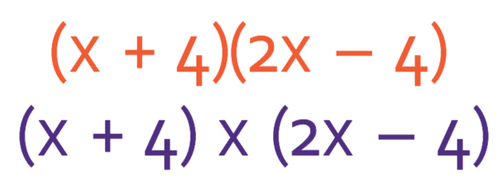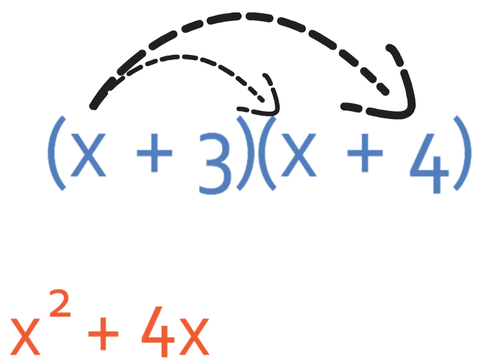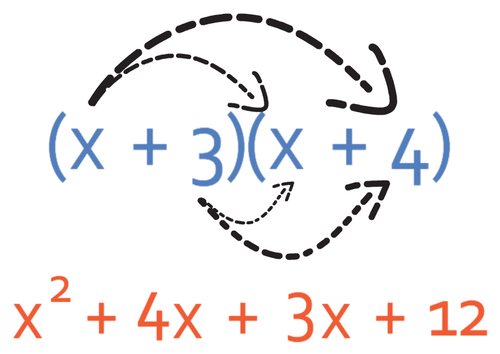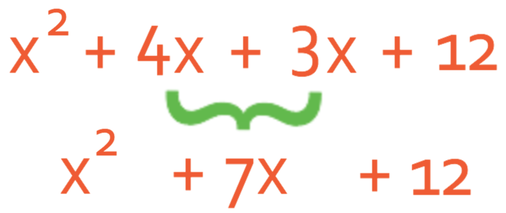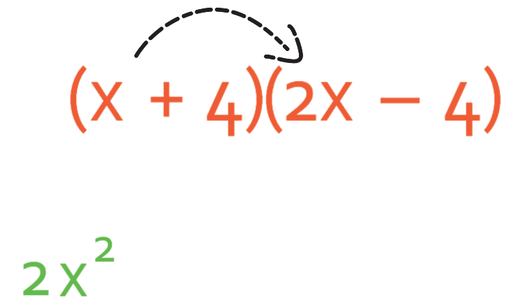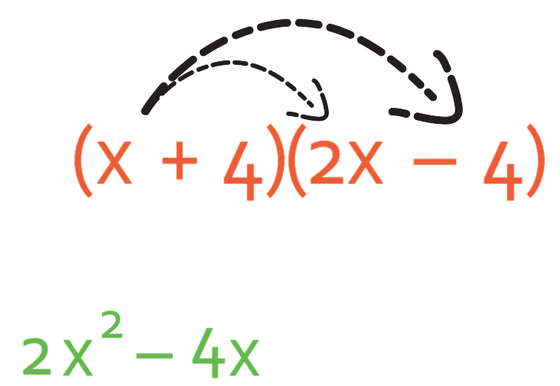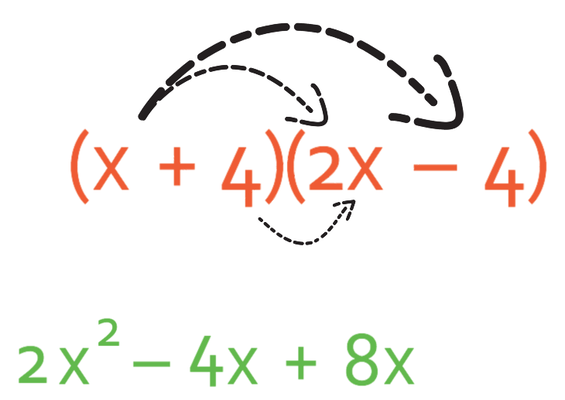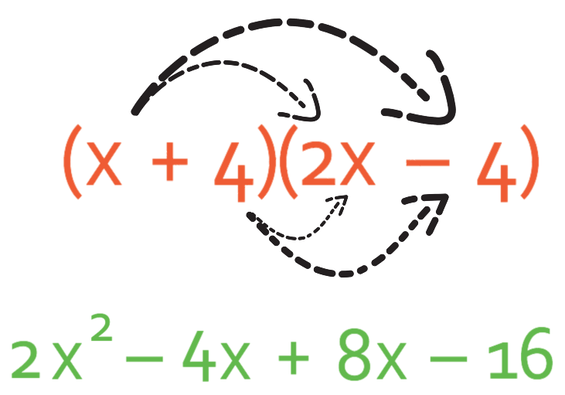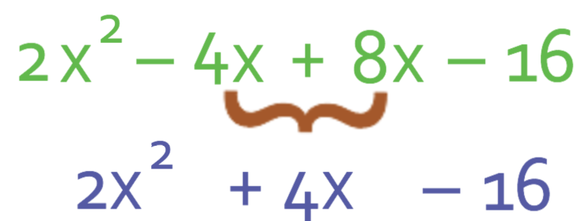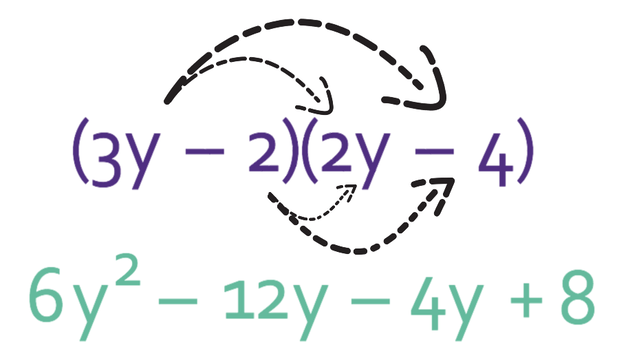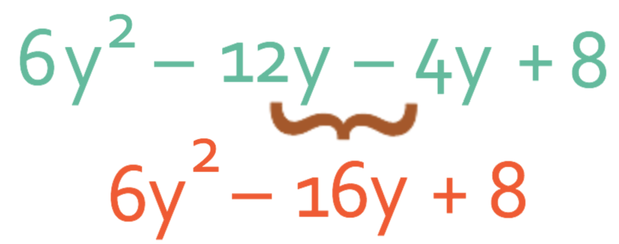2.1 H) Expanding Double Brackets – Part 1
Expand the brackets below.
I am going to use the FOIL method (First, Outside, Inside and Last) to expand these double brackets. The first step in the FOIL method is to multiply the first term in each of the brackets together; we therefore multiply x by x, which gives us x2.
The next step in the FOIL method is to multiply the outside terms, which means that we multiply x and 4, which gives us 4x.
We are now onto the I in FOIL, which stands for inside. This means that we multiply 3 and x, which gives 3x.
We are now onto the last part of FOIL, which is the L and this stands for the last terms. This means that we are multiplying 3 by 4, which gives us 12.
The final step is to simplify and collect any like terms. There are 3 different types of terms in this expression; these different terms are x2, x and numbers. There are two different terms in the expression that contain x’s (4x and 3x). We are able to combine these two terms to give us 7x. This results in the expression becoming:
The FOIL method is a good way to ensure that we multiply out double brackets correctly.
Let’s multiply out the brackets below.
I am going to be using the FOIL method (First, Outside, Inside and Last). This means that I will be multiplying out the first terms in each of the two brackets, which is x and 2x. When we are multiplying out these two terms, you may find it easier to split it up into the signs, numbers and then unknowns (only x’s in this case). Both of the terms that we are multiplying are positive, which means that the answer will be positive. We now multiply the numbers; 1 multiplied by 2, which is 2. Finally, we multiply the x’s; x multiplied by x is x2. Therefore, the first term is 2x2.
We now need to make sure that we have simplified the answer. There is only one term that has x2 in it and one term that only has numbers in it. However, there are two terms that contain x in and we can combine these terms. When we are combining the terms, we need to be careful about the signs that come before the terms. The two terms that we are combining are -4x and 8x, which when combined is 4x (-4x + 8x = 4x). The simplified expression is:
Expand and simplify the bracket below.
Like the question before, I am going to use the FOIL method.
We multiple the First terms first: 3y x 2y = 6y2
Next, we multiply the terms on the Outside of the brackets: 3y x (-4) = -12y
Wen then multiply the terms on the Inside of the brackets: (-2) x 2y = -4y
Finally, we multiply the Last terms in each of the brackets: (-2) x (-4) = 8
We combine all of these values to give us:

